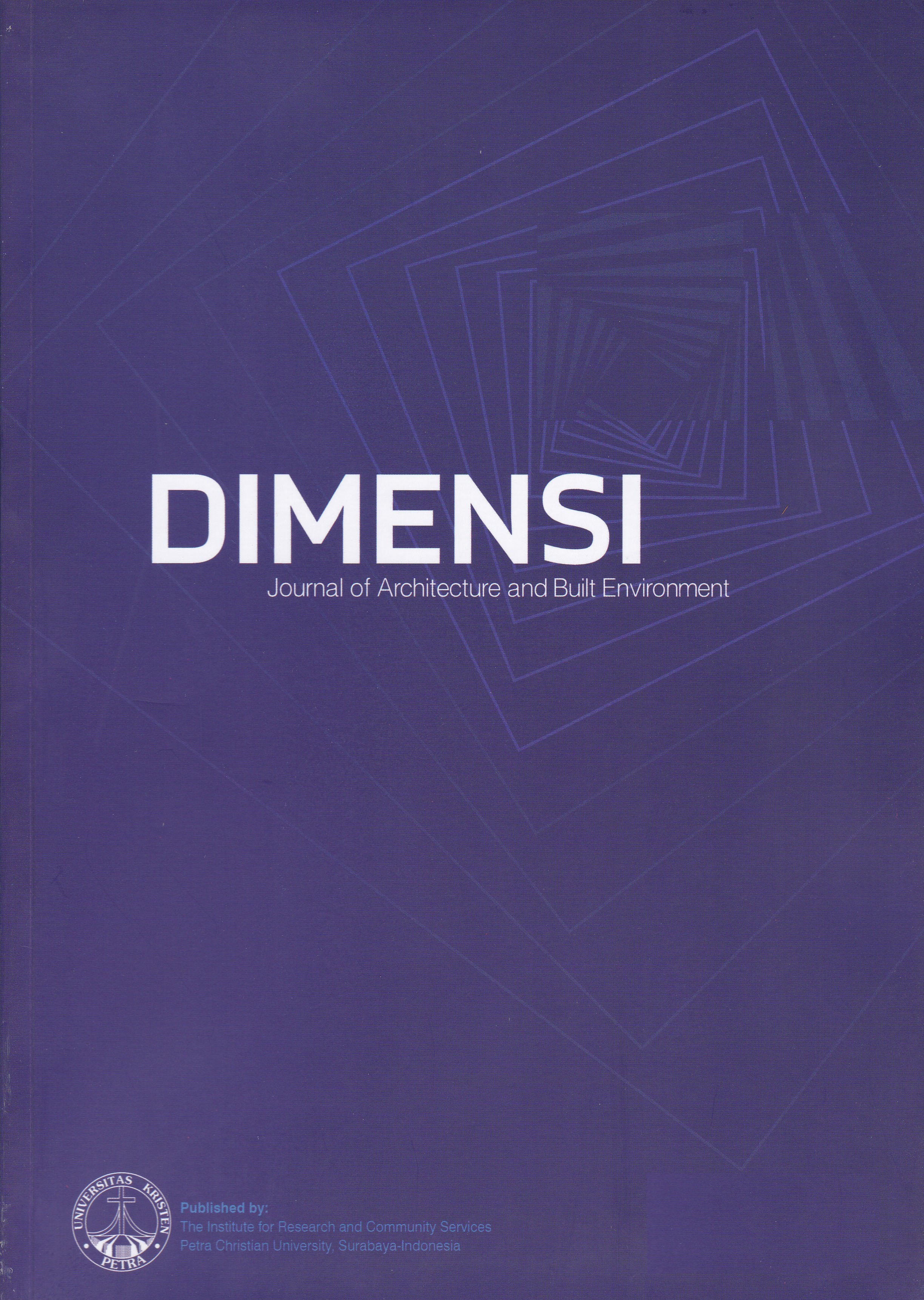Valued Objects Dynamics and Adaptability of Domestic Workspaces
DOI:
https://doi.org/10.9744/dimensi.50.2.69-80Keywords:
Value dynamics, system of objects, spatial adaptation, domesticAbstract
This paper discusses the dynamic value of objects that influence the spatial organization of a home-based workspaces. Spatial organization of workspace at home becomes significant with the emerging work-from-home arrangement during and post COVID-19 pandemic. The physical and psychological needs of working from home require adaptations on the domestic setting through the use and placement of objects in relation to how humans produce and experience space. This paper examines the value mechanism of remote workers with regards to their everyday objects and how such mechanism affects the overall workspace organization them. The study explores the workspace of 3 remote workers with different activities and preferences. The study shows that the dynamic value of objects shapes the workplace arrangements, enabling better accessibility, supporting the need for comfortable and pleasant qualities of space, as well as demonstrating self-identity. The study expands discussions on the spatial adaptation driven by dynamic system of objects.
Downloads
References
Baudrillard, J. (1996). The system of objects.
Borlini, M. M., & Califano, A. (n.d.). URBAN CORPORIS X UNEXPECTED - SPECIAL ISSUE. 394.
Boccagni, P., Brodesco, A., & Bruna, F. L. (2022). ‘Stayhome’ as a YouTube performance: Representing and reshaping domestic space under the 2020 covid lockdown in Italy. European Societies, 24(2), 129–153. https://doi.org/10.1080/14616696.2022.2043411
Brand, S. (1995). How buildings learn: What happens after they’re built.
Buchczyk, M. (2016). Dressing and Undressing the House: Rethinking objects in and out of households. Home Cultures, 13(3), 255–282. https://doi.org/10.1080/17406315.2016.1242326
Caan, S. (2011). Rethinking design and interiors: Human beings in the built environment. Laurence King.
Clements-Croome, D. (n.d.). Creating the productive workplace. 498.
Cwerner, S. B., & Metcalfe, A. (2003). Storage and Clutter: Discourses and Practices of Order in the Domestic World. Journal of Design History, 16(3), 229–239. https://doi.org/10.1093/jdh/16.3.229
Doling, J., & Arundel, R. (2022). The Home as Workplace: A Challenge for Housing Research. Housing, Theory, and Society, 39(1), 1–20. https://doi.org/10.1080/14036096.2020.1846611
Hand, M., Shove, E., & Southerton, D. (2007). Home Extensions in the United Kingdom: Space, Time, and Practice. Environment and Planning D: Society and Space, 25(4), 668–681. https://doi.org/10.1068/d413t
Harman, G. (2018). Object Oriented Ontology: A New Theory of Everything.
Harris, D. (2021). What Do Office Workers Place on Their Desks and in Their Offices? 10.
Hirzan, F., & Yatmo, Y. A. (2021). Coffee story: Unveiling indigenous delicacy through sensorial transaction. ARSNET, 1(2), 152-164. https://doi.org/10.7454/arsnet.v1i2.22
Holliss, F. (2015). Beyond live/work: The architecture of home-based work / Frances Holliss. Routledge.
Karimah, A., & Paramita, K. D. (2020). Investigating the Domestic Layers Adaptation During Pandemic. Interiority, 3(2), 185–200. https://doi.org/10.7454/in.v3i2.101
Kementerian Perencanaan Pembangunan Nasional/Bappenas, & Mungkasa, O. (2020). Bekerja dari Rumah (Working from Home/WFH): Menuju Tatanan Baru Era Pandemi COVID 19. Jurnal Perencanaan Pembangunan: The Indonesian Journal of Development Planning, 4(2), 126–150. https://doi.org/10.36574/jpp.v4i2.119
Laurence, G. A., Fried, Y., & Slowik, L. H. (2013). “My space”: A moderated mediation model of the effect of architectural and experienced privacy and workspace personalization on emotional exhaustion at work. Journal of Environmental Psychology, 36, 144–152. https://doi.org/10.1016/j.jenvp.2013.07.011
Marco, E., Williams, K., & Oliveira, S. (2020). Too Much ‘Stuff’ and the Wrong Space: A Conceptual Framework of Material Possessions. Interiority, 3(2), 219–242. https://doi.org/10.7454/in.v3i2.78
Olesen, B. B. (2010). Ethnic Objects in Domestic Interiors: Space, Atmosphere and the Making of Home. Home Cultures, 7(1), 25–41. https://doi.org/10.2752/175174210X12572427063760
Pavka, E. (2023). Nonmonogamous Interiors. Interiors, 0(0), 1–24. https://doi.org/10.1080/20419112.2023.2171228
Tian, K., & Belk, R. W. (2005). Extended Self and Possessions in the Workplace. Journal of Consumer Research, 32(2), 297–310. https://doi.org/10.1086/432239
Zumthor, P. (2006). Atmospheres: architectural environments, surrounding objects. Basel: Birkhäuser
Downloads
Published
How to Cite
Issue
Section
License
Authors who publish with this journal agree to the following terms:
- Authors retain copyright and grant the journal right of first publication with the work simultaneously licensed under a Creative Commons Attribution License that allows others to share the work with an acknowledgement of the work's authorship and initial publication in this journal.
- Authors are able to enter into separate, additional contractual arrangements for the non-exclusive distribution of the journal's published version of the work (e.g., post it to an institutional repository or publish it in a book), with an acknowledgement of its initial publication in this journal.
- Authors are permitted and encouraged to post their work online (e.g., in institutional repositories or on their website) prior to and during the submission process, as it can lead to productive exchanges, as well as earlier and greater citation of published work (See The Effect of Open Access).



















